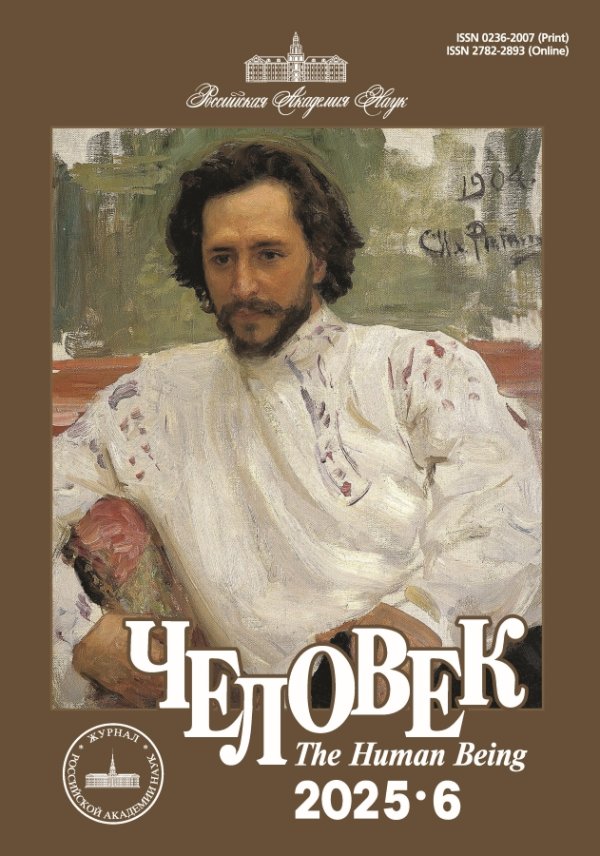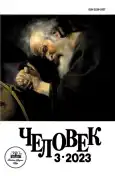Existential Problems of the Philosophy of Nursing J. Travelby and K. Martinsen in the Perspective of Palliative Care
- Authors: Chasovskih G.A.1
-
Affiliations:
- Pirogov Russian National Research Medical University
- Issue: Vol 34, No 3 (2023)
- Pages: 111-128
- Section: Social practices
- URL: https://journals.rcsi.science/0236-2007/article/view/141395
- DOI: https://doi.org/10.31857/S023620070026108-5
- ID: 141395
Full Text
Abstract
About the authors
Grigoriy A. Chasovskih
Pirogov Russian National Research Medical University1b Ostrovitianov str., Moscow 117997, Russian Federation
References
- Азбука паллиативной помощи детям / под ред. Н.Н. Саввы. М.: Изд-во «Проспект», 2020.
- Киркеволд М. Сестринское дело. Анализ и оценка теорий / пер. с норвежского Э. Панкратовой. М.: ПЕР СЭ, 2000.
- Мирошниченко М.Д. Жизнь, не принадлежащая себе: триада «ребенок — родитель — врач» и феноменология в паллиативной помощи детям // Социологическое обозрение. 2021. Т. 20, № 3. С. 182–214.
- Ноздрачев Д.И., Замятин К.А., Мирошниченко М.Д. Моральный дистресс в паллиативной помощи детям: классические проблемы и вызовы пандемии COVID-19 // Человек. 2022. Т. 33, №. 3. С. 138–158.
- Основы паллиативной помощи / под ред. Р. Твайкросса, Э. Уилкока; пер. с англ. В.В. Ерохиной, Г.Ш. Юнусовой. М.: Благотворительный фонд помощи хосписам «Вера», 2020.
- Франкл В. Человек в поисках смысла: пер. с англ. и нем. / общ. ред. Л.Я. Гозмана, Д.А. Леонтьева. М.: Прогресс, 1990.
- Хайдеггер М. Бытие и время / пер. с нем. и примеч. В.В. Бибихина. М.: Ad Marginem, 1997.
- Хайдеггер М. Письмо о гуманизме // Хайдеггер М. Время и бытие / пер. с нем. В.В. Бибихина. М.: Республика, 1993. С. 192–220.
- Alligood M.R. Nursing Theorists and Their Work. St. Louis, MO: Elsevier Health Sciences, 2017.
- Alvsvåg H. Kari Martinsen: Philosophy of caring. Nursing theorists and their work, ed. by M.R. Alligood. St. Louis, MO: Mosby Elsevier, 2014. P. 147–170.
- Alvsvåg H., Martinsen K.M. Omsorg og skjønn. Tidsskrift for omsorgsforskning. 2018. Vol. 4, N 3. P. 215–222.
- Berbiglia V.A., Banfield B., Dorothea E. Orem: Self-Care Deficit Theory of Nursing. Nursing theorists and their work, ed. by M.R. Alligood. St. Louis, MO: Mosby Elsevier, 2014. P. 240–257.
- Boge J., Martinsen K. Kritiske kommentarer til evidensbasert undervisning og praksis. Vård i Norden. 2006. Vol. 26, N 2. P. 32–35.
- Dobrina R., Tenze M., Palese A. An overview of hospice and palliative care nursing models and theories. International journal of palliative nursing. 2014. Vol. 20, N 2. P. 75–81.
- Ellingsen S. et al. The pendulum time of life: The experience of time, when living with severe incurable disease — a phenomenological and philosophical study. Medicine, Health Care and Philosophy. 2015. Vol. 18(2). P. 203–215.
- Eriksson K., Martinsen K. The hidden and forgotten evidence. Scandinavian Journal of Caring Sciences. 2012. Vol. 26, N 4. P. 625–626.
- Gysels M., Shipman C., Higginson I.J. Is the qualitative research interview an acceptable medium for research with palliative care patients and carers? BMC medical ethics. 2008. Vol. 9. doi: 10.1186/1472-6939-9-7
- Larkin P. Shaping new thinking in palliative nursing. International Journal of Palliative Nursing. 2007. Vol. 13, N 8. P. 364–364.
- Martinsen K. Fra Marx til Løgstrup. Om moral, samfunnskritikk og sanselighet i sykepleien. Oslo: Tano Forlag, 1993.
- Martinsen K. Omsorg, sykepleie og medisin: historisk-filosofiske essays. Oslo: Tano, 1989.
- Nursing and Midwifery. World Health Organization. 2023. URL: https://www.who.int/health-topics/nursing#tab=tab_1 (date of access: 03.02.2023).
- Øye C., Mekki T. The articulation of impressions An interview with Kari Martinsen. International Practice Development Journal. 2016. Vol. 6, N 1. P. 1–8.
- Parola V. et al. Travelbee’s Theory: Human-to-Human Relationship Model-its suitability for palliative nursing care. Revista de Enfermagem Referência. 2020. V Série, N 2. P. e20010. doi: 10.12707/RV20010
- Saunders C. The evolution of palliative care. Journal of the royal society of medicine. 2001. Vol. 94, N 9. P. 430–432.
- Saunders D.C. The philosophy of hospice. Loss and grief: A guide for human services practitioners, N. Thompson, J. Campling (eds.). London: Red Globe Press, 2002. P. 23–33.
- Schimmoeller E.M., Rothhaar T.W. Searching for Meaning with Victor Frankl and Walker Percy. Linacre Q. 2021. Vol. 88, N 1. P. 94–104.
- Travelbee J. To find meaning in illness. Nursing. 1972. Vol. 2, N 12. P. 6–8.
- Travelbee J. What do we mean by rapport? The American journal of nursing. 1963. Vol. 63. P. 70–72.
- Travelbee J. What's wrong with sympathy? The American journal of nursing. 1964. Vol. 64, N 1. P. 68–71.
- Voetmann S.S., Hvidt N.C., Viftrup D.T. Verbalizing spiritual needs in palliative care: a qualitative interview study on verbal and non-verbal communication in two Danish hospices. BMC Palliative Care. 2022. Vol. 21, N 1. doi: 10.1186/s12904-021-00886-0










